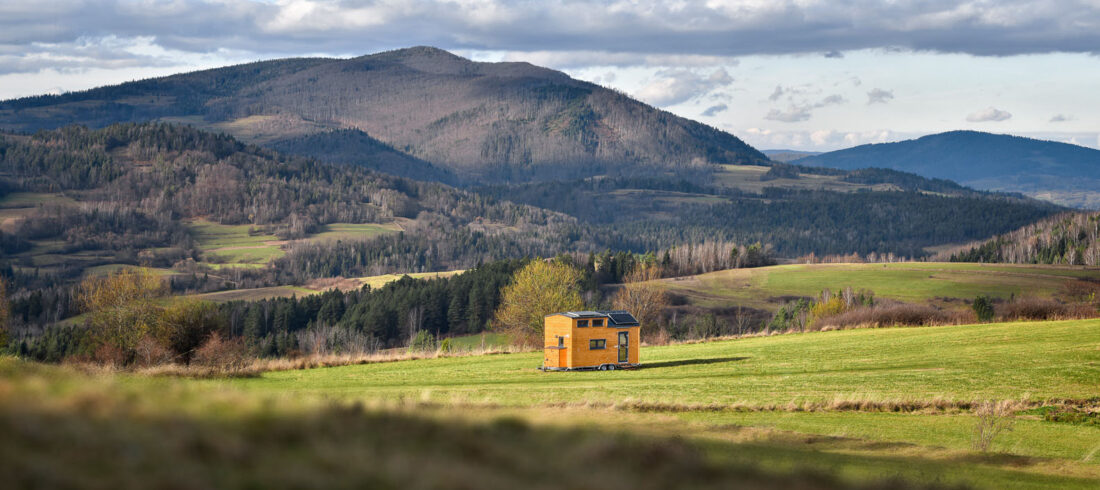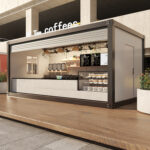In the highly challenging landscape of running an agricultural business, the quest to unlock the full potential of your property is a highly difficult and stressful one. This challenge can often leave owners looking for ways they can maximise their business and its land without needing to enter into the complex world of bureaucracy and red-tape. With this in mind, the question “what can I build on agricultural land without planning permission?” springs to mind.
In this situation, Permitted Development Rights (PDR) emerge as a beacon, offering many property owners the ability to pursue a number of developments without planning permission. This blog intricately explores the full spectrum of possibilities within agricultural Permitted Development Rights — what it means, the types of alterations you can make, and more. As we delve into this world, it will become clear that understanding the limitations is almost as crucial as recognising the potential PDR affords you. Read on to find out more:
What Are Permitted Development Rights?
Permitted Development Rights grant UK property owners the authority to undertake certain types of development to their property without the need for specific planning permission. The purpose of PDR, when introduced, was to greatly simplify the planning process for certain types of developments.
Permitted Development Rights cover a wide spectrum of alterations and changes to your land, affording you much more flexibility when it comes to making modifications to your property. However, the actual scope of PDR can vary greatly based on a number of factors, including property type, location, prior planning history, and more.
PDR can cover a number of different categories of land alterations, including:
- Home Extensions: PDR allows a homeowner to extend their property without the need for any explicit planning permission for projects such as loft conversions, rear extensions, etc., that are intended to expand a living space.
- Changes of Use: A property owner may be able to utilise PDR in order to alter their land use from one designated usage to another without the need for a formal application. For example, converting city centre office spaces into residential units would fall under this remit.
- Telecommunication Installation: Attempts at installing necessary infrastructure in order to improve connectivity (masts and antennas) would fall under Permitted Development Rights.
- Commercial/Retail Alterations: The owner of a commercial or retail property would be within their right to make necessary alterations to the layout or function of their space — without needing to undergo an extensive planning permission process.
It is important to remember that, despite the purpose of PDR being to expedite the process of making alterations to your property, there are notable limitations and conditions. These restrictions cover all forms of property and refer to aspects like size and scale of the alteration and the property itself, design and aesthetic considerations, and the building’s status (listed/protected) Property owners must very carefully navigate these constraints if they intend to comply with the Permitted Development Rights regulations.
Common Limitations on Agricultural Permitted Development Rights
While agricultural Permitted Development Rights offer considerable amounts of flexibility for rural development, it’s important to be aware of all of the specific limits in place. These constraints include considering the environmental impact of plans, as well as its compliance with the existing agricultural character, the time limitations of a temporary structure, and more.
Understanding the most common limitations on agricultural Permitted Development Rights is vital for any property owners and developers looking to take advantage of the rules. These limits include, but are not limited to:
Restrictions on Size and Scale
Agricultural Permitted Development Rights often include limits to the size and scale of the proposed development. This may take into account elements such as the total floor area, the height of a structure, as well as the overall footprint of the development.
If a proposal exceeds these restrictions, the owner will likely be required to make a more formal, and often time-consuming, planning permission application in order to revive plans.
Therefore, property owners should very carefully review these constraints in order to ensure that their plans will fall within the permitted limits set by local authorities.
- How Live Off Grid Can Help: This issue of size and scale likely presents a unique opportunity to consider the benefits a shipping container property could bring. Due to intelligent, space saving design, a container home, office, farm building, etc. is created to have exactly as much room as you need.
Minimise Environmental Impact:
Agricultural Permitted Development Rights will often prioritise reducing the environmental impact of a rural development as much as possible. Local authorities will likely scrutinise proposed projects in order to ensure total alignment with sustainable and environmentally-friendly practices.
Therefore, if you’re planning alterations to your agricultural land, it’s vital you consider the ecological footprint of proposed plans and explore what ways you can minimise disruption to the environment — otherwise your plans could be significantly delayed or cancelled altogether.
- How Live Off Grid Can Help: PDR placing a prominent focus on the sustainability of your project aligns perfectly with the Live Off Grid ethos. We believe strongly that shipping container structures are the future of sustainable living in the UK and around the world. For more information why, check out our dedicated blog.
Maintain Aesthetic Integrity
The act of preserving the aesthetic integrity of the rural surroundings of agricultural land is considered as paramount under DPR.
The local authority will assess whether the proposed development will complement the natural beauty of the landscape. Implementing measures such as utilising local materials and integrating green design elements can enhance the likelihood of obtaining approval.
In essence, to preserve the rural character involved implementing thoughtful design practices intended to not only not detract from, but complement the existing landscape.
- How Live Off Grid Can Help: A well thought out and designed container on your land can compliment its surroundings. Our team can utilise design elements that can positively contribute to the aesthetic integrity of the area. Additionally, if your container serves a practical purpose relating to agricultural activities (an office or other farm building), it may be viewed as a functional addition to the land.
Time Limitations for Temporary Structures
A property owner asking ‘what can I build on agricultural land without planning permission?’ will often look to install temporary structures. While yes, PDR does permit temporary structures, there are often time limits associated with such development types.
Therefore, property owners should always be mindful of these restrictions and plan accordingly. The time limit put onto temporary structures will vary on the structure, your land, and other factors. However, the most common limitation is around 28 days.
- How Live Off Grid Can Help: A Live Off Grid shipping container conversion is classified as a temporary structure. Essentially viewed as a caravan, our containers are designed to be portable, hence they should be exempt from planning permission requirements.
7 Agricultural Permitted Developments
From bringing fresh life to an existing structure by converting it, to building new ones to suit additional needs on-site, installing temporary dwellings for workers to building new tracks/roads on your land to increase efficiency, there are a number of options available to you that meet the confines of Permitted Development Rights.
7 of the most common agricultural permitted developments you can build on agricultural land without planning permission include:
Agricultural Buildings Conversion
PDR will often allow for the conversion of an existing agricultural structure for the purpose of altering its intended use. This allows property owners to be more flexible about repurposing unused or underutilised structures on their land, cutting down the need to build unnecessary additional structures.
- Example: Converting an existing barn into a farm office or farm shop. This allows a farmer to easily enhance their operational efficiency, or even diversify their income streams.
New Agricultural Buildings
Provided the proposed new structure adheres to all size and scale restrictions, property owners may be able to construct a new agricultural building under PDR. The purpose of these buildings should be to support the operational needs of the land.
- Example: A bespoke structure may be necessary to provide storage, security, and shelter from the elements for high-value farming equipment and vehicles.
Temporary Dwellings for Workers
The installation of short-term, easily transportable dwellings on agricultural land could be permitted. This can be vital to accommodate key farm workers during specific high-volume seasons.
- Example: Installation of temporary shipping container homes on your property for use during peak agricultural activities to ensure accommodation with minimal stress.
Changes in Land Use
PDR offers landowners the added flexibility to adapt the intended use of their land in order to align with ever-evolving needs. This is key to promoting greater efficiency, versatility, and adaptability in the often volatile agricultural industry and wider economic landscape.
- Example: Converting a portion of grazing land to an arable field to allow for better diversification of crops.
Telecommunication Installation
While historically, agricultural businesses can be associated with hard work and grit, with little in the way of technological innovation. However, industry trends in recent years have shifted and, just as it is in other industries, the agricultural world has embraced the need for better connectivity in the name of improving efficiency and effectiveness on a day-to-day basis.
- Example: Installing masts or antennas around your lands in order to improve connectivity across the often large farmlands.
Farm Tracks & Access Roads
In order to facilitate as effective movement as possible across agricultural land, farm tracks and access roads are included under the PDR.
- Example: Creating a brand new track that connects different parts of the property, facilitating the more effective movement of key machinery, livestock, etc.
Renewable Energy Installation
As mentioned above, a huge factor in agricultural Permitted Development Rights is renewability and energy-consciousness. It is for this reason that PDR will often cover the installation of solar panels and other renewable energy sources on agricultural land. This allows property owners to harness environmentally-friendly energy sources to support their operations sustainably.
- Example: Installation of solar panels on previously unused or underutilised sections of agricultural land in order to generate extra sources of renewable energy for use on the property, reducing reliance on traditional energy sources.
Live Off Grid Container Inspiration For Your Agricultural Land: No Planning Permission Necessary
A Live Off Grid converted shipping container, no matter the intended purpose will, as long as you stick to the rules and regulations, require absolutely no planning permission. This means you are able to embrace the new way of living and working, working and playing, without needing to worry about wading into the overly-complex world of planning permission.
Our containers are designed to be multi-purpose. No matter what you need, we have a perfect opportunity for you. From both temporary and permanent (not exempt from planning permission) homes, to shipping container garages, holiday homes, and even pools, the possibilities are truly endless.
Are you asking yourself “what can I build on agricultural land without planning permission?”Check out our array of containers and what they could bring to your business below:
- Home: A converted container can serve as on-site housing for the farm manager or other key members of staff. This can provide convenient, cost-effective, environmentally friendly housing in close-proximity to the operations.
- On-Site Office Space: An office container can be a practical yet luxurious space for administrative work, record-keeping, and daily management of agricultural operations without the need for an unnecessary construction project.
- Restaurant: A restaurant can be an excellent way to diversify your income. You can showcase the farm’s produce, offering a direct-to-consumer dining experience and promote local and sustainable agriculture. While a permanent restaurant is likely to require planning permission, a pop-up restaurant for peak-season or to take to local events could be exempt.
- Gym: An on-site gym can encourage not only physical fitness, but also promote mental well-being, which can potentially reduce both physical and mental health-related absences.
- Bar Space: A bar container can be used for on-farm events. This gives you an excellent option for recreation and relaxation during down-time, or even a possibility to put on events for members of the community or peers.
- Social Spaces: A social space can foster a strong sense of community among workers, providing areas for relaxation, interaction, and team-building. This can improve morale and, as a result, output.
- Garage: Shipping containers are designed to be sturdy and keep their contents secure. For this reason, converted containers can serve as excellent garages to store farm equipment, machinery, tools, and vehicles, protecting them from theft and from the elements.
- Cafe: A shipping container cafe on site can be a great place to offer fresh produce, coffee, and snacks, providing you with an additional revenue stream, a second way to sell produce, and enhance your image in the community.
- Holiday Homes: Agritourism is a booming market. A converted container as a holiday home can attract these ‘agritourists’, offering them a unique and comfortable farm-stay, while generating you a healthy additional income.
- Temporary Housing: Containers can be used as temporary accommodation to house seasonal workers during peak months, providing comfortable and convenient lodgings for seasonal farmworkers.
- Shipping Container Pool: A pool container can be a highly unique addition to agricultural land. It can act for recreation and some much-needed relaxation during downtime, improving quality of life and general mental well-being.
These plentiful uses of our offerings demonstrate how versatile converted shipping containers can be for all manner of industries and businesses, including agriculture. Our aim is to offer practical solutions for housing, workspaces, recreation, and hospitality, and to better our collective wellbeing and impact on the planet around us.
In agriculture, business can be tough. All it takes is a stormy season and large quantities of your crops can be affected, along with your profit margins. The many diversification opportunities presented with a Live Off Grid shipping container can increase profitability of your business all year-round.
Live Off Grid: Transform Your Land Today
As the complexities of agricultural property development become clearer, the question resonates: “What can I build on agricultural land without planning permission?” Permitted Development Rights stand as the best answer to this. There are a number of important innovations made possible by PDR — innovations that could transform a business.
Against the backdrop of the common challenges faced by agricultural business with the changing of the seasons, PDR becomes a crucial beacon for sustainable growth in both the short and long-term.
With this in mind, Live Off Grid’s converted shipping containers seamlessly align with PDR regulations, offering you a pragmatic, sturdy, and sexy solution. The constant battle by agricultural businesses to stay in the black sets the perfect stage for the durability and flexibility a shipping container farm building, office, home, cafe, etc. can bring.
Our containers are the perfect blend of sustainability, mobility, flexibility, and creativity, making them a standout choice.









